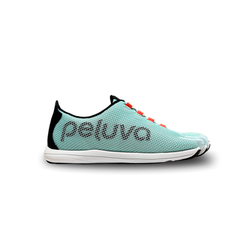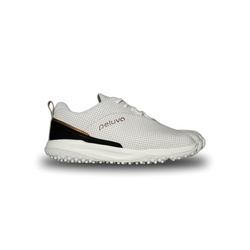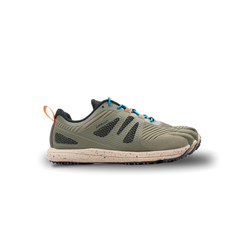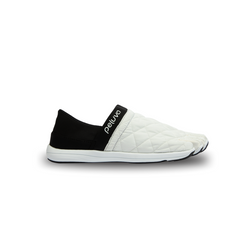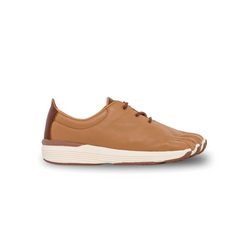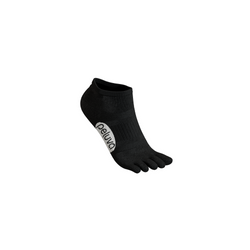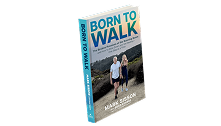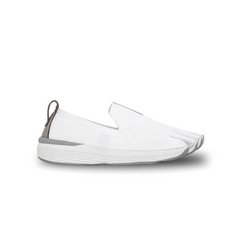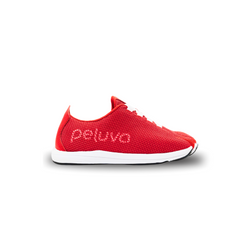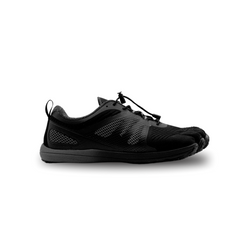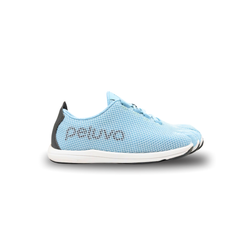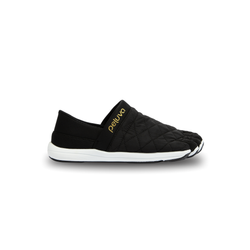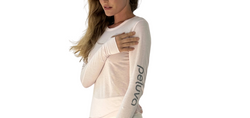Running overuse injuries are caused by elevated, cushioned shoes enabling poor technique and excessive impact trauma, and enabling poorly adapted subjects to run long distances with their poor technique and excessive impact trauma. It’s time to end this nonsense, enjoy your fitness activities without getting injured or exhausted, regain foot functionality that has been compromised by a lifetime in elevated, cushioned shoes, and become more adaptable for a variety of active lifestyle adventures. Here’s how:
Start walking!: Seriously, walking is the key to aerobic fitness, injury prevention and even weight loss. Walking (call it “Zone 1” cardiovascular exercise) allows you to develop an excellent aerobic conditioning base without the physiological stress of jogging at slightly to significantly elevated heart rates, and without the impact trauma caused by jogging with poor technique. With walking, impact load is only around 1.5 to 1.75 times bodyweight (because one foot is on the ground at all times). This is far less than even slow jogging (2-3x bodyweight.) Walking allows you to build resilient muscles, joints, and connective tissue so you can absorb and benefit from faster-paced workouts without breaking down.
Emphasize functional fitness: In addition to extensive walking, it’s important to conduct regular full-body resistance exercises and occasional brief all-out sprints to develop functional fitness for all manner of everyday activities. Increasing strength in all the major muscle groups of the body will allow you to preserve correct technique as you become fatigued in the latter stages of your runs. Becoming competent at sprinting will improve bone density and musculoskeletal resiliency to improve performance at all lower levels of exercise intensity.
Correct functional deficiencies: The sedentary influences of modern life lead to an assortment of muscle weaknesses and imbalances, and loss of flexibility and mobility in joints and connective tissue. Due to the repetitive, prolonged, and high-impact nature of jogging, it’s especially important to dedicate sufficient time to mobility, flexibility, dynamic stretching, static stretching, and re-hab and “pre-hab” exercises.
At the very least, don’t lace up your shoes and start huffing and puffing down the road. First, get the blood flowing with some gentle, flowing yoga sequences, then perform a sequence of dynamic stretching exercises that exaggerate the running stride range of motion. Finally, dedicate the first 5-10 minutes of every workout to a proper warmup, where you move at an extremely comfortable pace (like walking) until you gracefully elevate heart rate, respiration rate, and body temperature.
For all but the most superbly conditioned runners, a warm-up period means a medium-to-brisk walk before assuming your typical jogging/running pace. Also spend the last 5-10 minutes of your workout doing a proper cooldown, where you slow to a walk and allow a graceful reduction of heart rate before you stop.
Improve foot functionality: Shoes inhibit the foot from performing its duties in absorbing impact, balancing moving bodyweight, and generating forward propulsion. Give your feet the training they need by going barefoot in the home and in other safe locations, and integrating more minimalist footwear whenever possible. Peluvas provide the most safe, versatile and functional barefoot-type experience due to the critical design feature of individual toe articulation (separate slot for each toe.)
Peluvas are great for walking, daily activities around town, gym workouts such as strength training or group exercise classes, and other low-impact fitness endeavors. We don’t recommend that you run in Peluvas, because the high-impact, high-risk nature of running requires an elevated, cushioned shoe. However, when you strengthen your feet by wearing Peluvas in everyday life, you can minimize the destructive effects that running shoes have on your feet!

